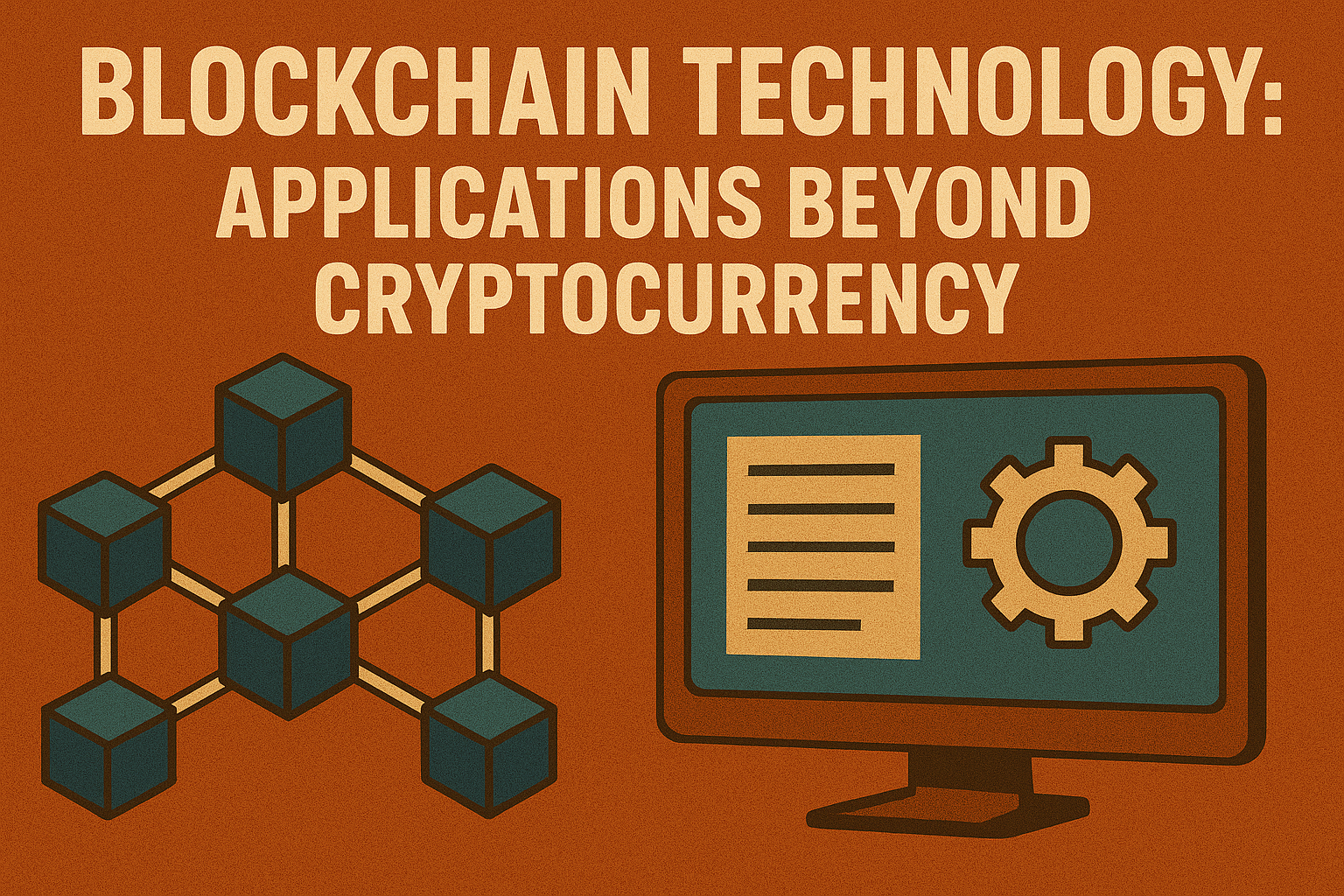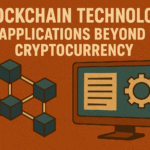
Blockchain Technology: Applications Beyond Cryptocurrency
Blockchain technology, initially popularized by Bitcoin, is far more than just a digital currency infrastructure. Its underlying principles of decentralized, secure, and transparent data management have far-reaching implications across various industries. This powerful technology offers solutions to long-standing problems related to trust, transparency, and security, extending its reach far beyond the realm of cryptocurrency. This blog post delves into the multifaceted applications of blockchain, demonstrating its potential to revolutionize sectors from healthcare to voting systems and supply chain management. We will uncover how this innovative technology is reshaping our world in ways we are only beginning to understand.
Supply Chain Management: Enhanced Transparency and Traceability
Blockchain’s immutable ledger is ideal for tracking goods throughout the supply chain. Every step, from origin to consumer, is recorded, enhancing transparency and accountability. This allows businesses to combat counterfeiting, improve efficiency, and build consumer trust. For instance, a consumer can scan a product’s unique blockchain ID to verify its authenticity and trace its journey through the supply chain. This level of traceability empowers consumers to make informed purchasing decisions and helps businesses build stronger relationships with their customers. Improved efficiency comes from the reduced paperwork and streamlined processes that blockchain facilitates. Real-time tracking minimizes delays and reduces the risk of product loss or damage. Furthermore, enhanced transparency can help to identify bottlenecks and inefficiencies within the supply chain.
Healthcare: Secure and Private Data Management
The healthcare industry grapples with data security and interoperability challenges. Blockchain offers a solution by creating a secure, tamper-proof system for storing and sharing patient medical records. This decentralized approach improves patient privacy while ensuring data integrity. Imagine a scenario where patients control access to their medical records, securely sharing data with authorized healthcare providers. This eliminates the risk of data breaches and unauthorized access, promoting patient trust and empowering individuals to manage their health information proactively. The ability to easily share data amongst various healthcare providers accelerates diagnoses, improves treatment coordination, and overall patient care. Moreover, blockchain could streamline clinical trials by securely managing patient data and tracking the progress of research.
Digital Identity Management: Secure and Decentralized Identification
Our digital identities are increasingly important. However, centralized systems are vulnerable to breaches and misuse. Blockchain can create a secure and decentralized identity management system, giving individuals greater control over their personal information. Imagine a world where you manage your digital identity on a secure blockchain, controlling which data is shared and with whom. This could revolutionize online interactions, making them safer and more trustworthy. This increased control reduces the risk of identity theft and fraud, protecting individuals from potential harm. Furthermore, streamlined identification processes could improve access to services and reduce bureaucratic hurdles. This system could benefit governments, businesses, and individuals alike.
Voting Systems: Enhancing Transparency and Security
Concerns about election security and integrity are widespread. Blockchain technology could revolutionize voting systems by offering a transparent and secure method for recording and counting votes. A blockchain-based voting system would provide an auditable trail, reducing the risk of fraud and manipulation. Furthermore, blockchain can ensure that only eligible voters participate in the election, enhancing the integrity of the democratic process. This increased transparency builds public trust and confidence in election results. The decentralized nature of blockchain makes the system more resilient to attacks and less susceptible to manipulation. However, implementation requires careful consideration of accessibility, usability, and the potential for technical glitches.
Intellectual Property Rights Management: Protecting Creative Works
Protecting intellectual property is a significant challenge. Blockchain offers a tamper-proof record of ownership, making it easier to track and verify the authenticity of creative works. This helps to combat copyright infringement and protect artists’ rights. With a secure timestamped record, creators can demonstrate ownership of their work, providing stronger evidence in case of disputes. This can incentivize creativity and innovation. The system can also facilitate easier licensing and royalty payments, allowing creators to more effectively manage their intellectual property portfolio. However, challenges remain in terms of establishing a universally accepted system and ensuring interoperability between different blockchain platforms.

Real Estate: Streamlining Transactions and Increasing Transparency
Real estate transactions are often complex and time-consuming. Blockchain can streamline the process by creating a secure and transparent platform for managing property records and transferring ownership. This reduces the risk of fraud and speeds up transaction times. The immutability of the blockchain ensures that property records are accurate and cannot be altered, increasing trust between buyers and sellers. This increased efficiency and transparency can also reduce costs associated with traditional real estate transactions. However, widespread adoption requires careful consideration of legal frameworks and regulatory compliance.
Financial Services: Enhancing Security and Efficiency
Beyond cryptocurrencies, blockchain is transforming traditional financial systems. It offers solutions for cross-border payments, reducing transaction costs and processing times. Moreover, blockchain can improve the security and efficiency of other financial services, such as trade finance and insurance. The distributed ledger technology enhances transparency and reduces the risk of fraud, building trust among participants. For example, faster and cheaper cross-border payments can benefit businesses involved in international trade. Similarly, more efficient insurance claim processing can save both insurers and customers time and money. However, scalability and regulatory challenges still need to be addressed.
Environmental Monitoring: Tracking and Verifying Sustainability Efforts
Blockchain can provide a transparent and verifiable record of environmental data, promoting sustainability initiatives. It can track carbon emissions, monitor deforestation, and verify the origin of sustainable products. This helps companies and governments to accurately track progress toward sustainability goals. Transparency ensures that environmental claims are verifiable, building trust with consumers. It can also facilitate the development of carbon offset markets by providing a secure and auditable system for tracking and verifying carbon credits. However, integration with existing environmental monitoring systems requires further development.
Decentralized Autonomous Organizations (DAOs): Redefining Governance
DAOs are organizations run by code, governed by rules encoded on a blockchain. They represent a new model of governance, offering a transparent and democratic approach to decision-making. Members can participate in decision-making processes through voting mechanisms encoded on the blockchain. This reduces the risk of centralized control and promotes transparency and accountability. However, the legal implications and governance challenges of DAOs require further exploration.
Education: Secure and Verifiable Credentials
Blockchain technology can revolutionize the way educational credentials are managed. By storing academic records on a blockchain, institutions can create secure and tamper-proof transcripts. This makes it easier for students to share their academic achievements with prospective employers and educational institutions. This also enhances transparency and reduces the risk of fraud or document falsification. It provides individuals with greater control over their academic data and simplifies the verification process for those seeking further education or employment opportunities. However, issues of data privacy and access need careful consideration.
Conclusion
Blockchain technology’s potential extends far beyond cryptocurrency. Its ability to create secure, transparent, and efficient systems is transforming various industries. From supply chain management to healthcare, voting systems to digital identity, the applications are vast and continue to grow. As the technology matures and adoption increases, we can expect even more innovative uses of blockchain to emerge, further reshaping our world in profound ways. The challenges remain, primarily involving scalability, regulatory clarity, and user-friendliness, but the potential benefits are undeniable, promising a future built on increased trust and efficiency.
10 Amazing Things Only 90s Kids Still Do in 2025: A Nostalgic Trip Down Memory Lane – Geeks kepler
rest of the season.
reddit.com




